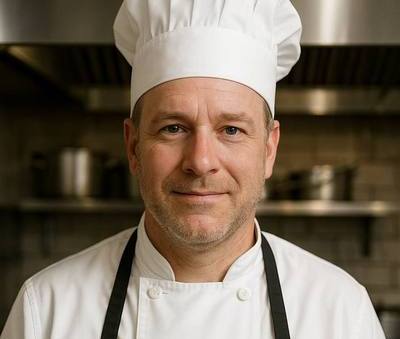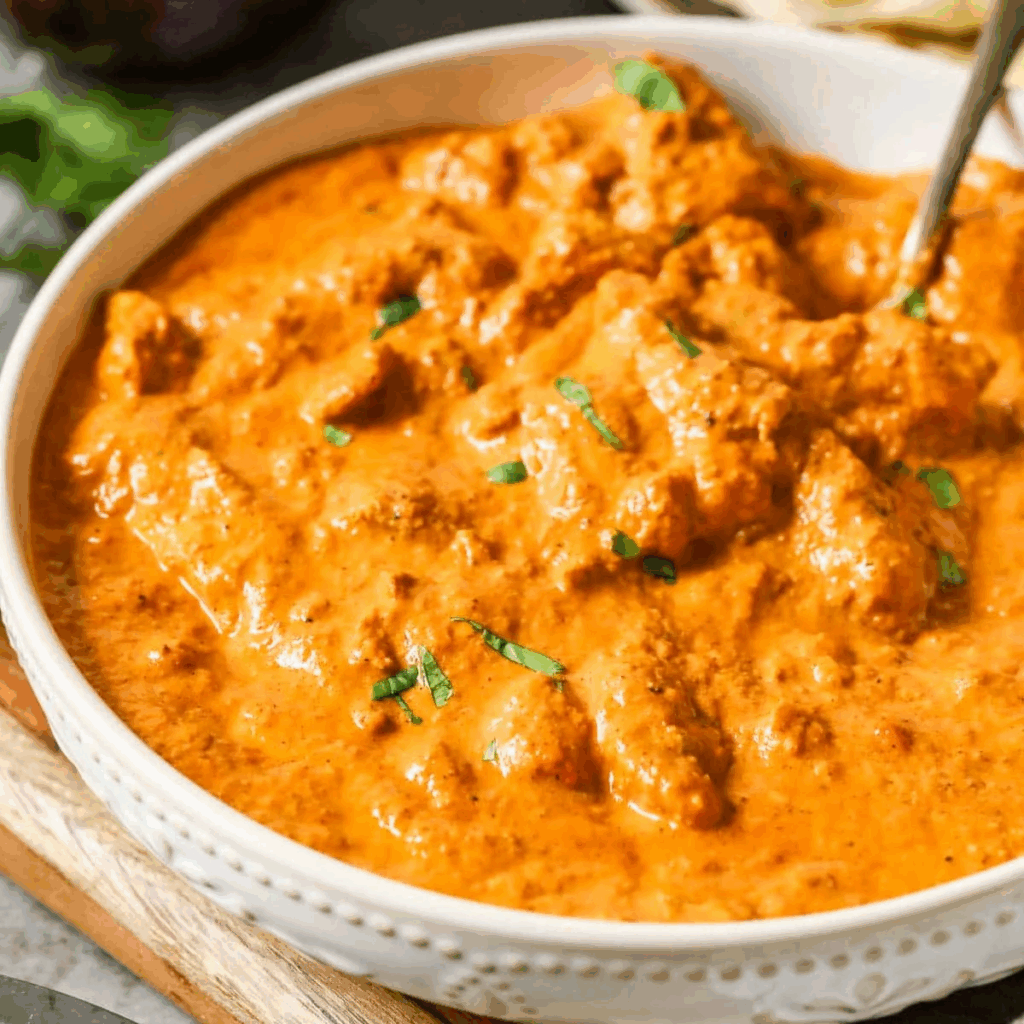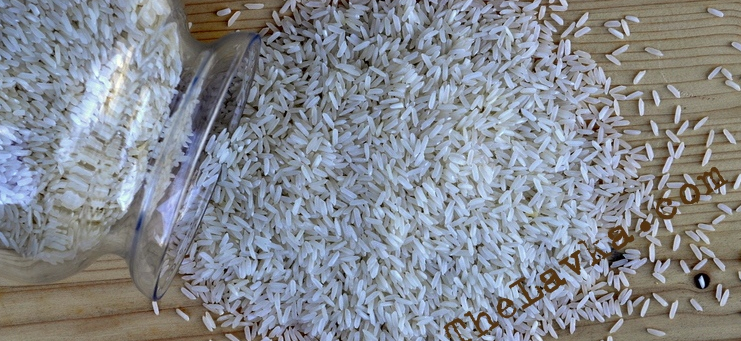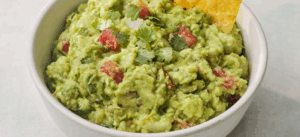What Is Butter Chicken and How to Cook It at Home – Approach to This Creamy Indian Classic

This dish was born in Delhi in the mid-20th century, when leftover tandoori chicken was given new life by simmering it in a tomato, butter, and cream-based sauce. Since then, it has traveled the world, earning its place on restaurant menus, family tables, and weeknight rotations. In this article, I’ll walk you through how I make it at home—from classic marinades to smart cooking methods and bold flavor additions.
- What Butter Chicken Is and Why It Works
- Ingredients I Use for Butter Chicken
- Cooking Time and Method Overview
- Building Flavor with the Marinade
- How I Make the Signature Butter Chicken Sauce
- Vegetarian Butter “Chicken” Alternatives
- Cooking Butter Chicken in a Slow Cooker
- Baking Butter Chicken in the Oven
- Using a Microwave or Instant Pot at Home
- Side Dishes and How I Serve Butter Chicken
- Storing, Reheating, and Using Leftovers
- Creative Variations I’ve Tested
- Common Mistakes to Avoid When Cooking Butter Chicken
- First and Second Course Pairings
- Nutritional Insights for Butter Chicken
- Final Thoughts from My Kitchen
- FAQ

What Butter Chicken Is and Why It Works
Butter chicken is a rich, creamy tomato-based curry made with marinated chicken (often cooked in a tandoor or grilled), which is then simmered in a sauce made of butter, tomatoes, cream, and warming spices like garam masala and fenugreek. The name “butter chicken” comes from the generous amount of makhan (butter) used to enrich the sauce.
What makes this dish work, in my opinion, is balance. The tomato brings acidity, the butter smooths it out, the cream makes it lush, and the spices provide aromatic depth without overwhelming the palate. It’s hearty, comforting, and surprisingly easy to customize at home without compromising on authenticity.
When I cook it for guests who’ve never tried Indian food before, butter chicken is my gateway. It delivers on flavor, complexity, and texture—all without overpowering the senses.
Ingredients I Use for Butter Chicken
Over the years, I’ve refined my own list of ingredients for a restaurant-quality butter chicken you can make at home. Here’s what I always reach for:
For the marinade
- Boneless chicken thighs or breasts (I prefer thighs for juiciness)
- Yogurt (full-fat)
- Ginger-garlic paste
- Lemon juice
- Kashmiri red chili powder (for color, not heat)
- Ground cumin
- Salt
For the sauce
- Butter (unsalted)
- Onion, finely chopped
- Fresh tomatoes or tomato puree
- Garlic and ginger
- Garam masala
- Ground coriander
- Turmeric
- Kasuri methi (dried fenugreek leaves)
- Heavy cream
- Sugar (just a pinch)
- Salt to taste
These ingredients come together to create something far greater than the sum of their parts. You don’t need every spice in the Indian pantry—but these are the essentials.

Cooking Time and Method Overview
Here’s a breakdown I use when deciding how to prepare butter chicken depending on time, equipment, and portion size. This table helps me plan prep whether I’m cooking for family or a 20-person event:
| Method | Chicken Prep Style | Cook Time | Sauce Finish Time | Notes from My Kitchen |
| Stovetop (classic) | Grilled or pan-seared | 10–12 min | 20–25 min | Deep flavor, best control |
| Oven (baked chicken) | Marinated, baked | 18–20 min at 425°F | 25 min | Great when grilling isn’t an option |
| Instant Pot | Raw, pressure-cooked | 8 min (high) | 10 min sauté mode | Quick, surprisingly creamy |
| Slow Cooker | Raw, whole in sauce | 4–6 hrs on LOW | Minimal at end | Low-effort, good flavor but less browning |
| Microwave (reheat) | Pre-cooked | 2–3 min | — | Only for leftovers |
I always finish the sauce separately, even if I slow-cook the chicken. It gives me more control over texture and color.
Building Flavor with the Marinade
The first time I tasted a properly marinated butter chicken, I realized how important this stage is. Even before the sauce comes in, the chicken must be deeply infused with flavor.
I whisk together full-fat yogurt, lemon juice, garlic-ginger paste, cumin, and Kashmiri chili, then add the chicken and let it sit for at least 2 hours—ideally overnight. This tenderizes the meat, infuses it with spice, and ensures that it chars beautifully if grilled or broiled.
At home, I often sear the marinated pieces in a hot pan or under the broiler to replicate that tandoor-like edge. I don’t cook it fully—just enough to get color and smoky flavor. The sauce will do the rest.
How I Make the Signature Butter Chicken Sauce
The heart of this dish is the sauce. And trust me—it’s not just about dumping cream into tomatoes. It’s about layering.
I start by melting butter (generously!) in a wide sauté pan, then I add chopped onions and sauté them until just golden—not browned. Next comes garlic and ginger, stirred until aromatic. Then I pour in tomato puree (or blended fresh tomatoes if I have time) and let it simmer until thickened and slightly darkened in color.
Once reduced, I stir in garam masala, coriander, turmeric, salt, and a pinch of sugar to cut the acidity. Just before adding the cream, I crush some kasuri methi between my palms and stir it in—that’s the secret aroma most home cooks miss.
Finally, I add heavy cream slowly, stirring constantly, until the sauce turns a velvety orange. If I’m feeling indulgent, I swirl in more butter at the end. The pre-seared chicken is folded in last, simmered just until cooked through.

Vegetarian Butter “Chicken” Alternatives
Not everyone eats meat, and that’s never stopped me from sharing the magic of this sauce. I’ve built vegetarian versions that are just as rich, with proteins and textures that hold up beautifully.
Here’s what I’ve used in my kitchen and how they perform:
| Ingredient | Texture Outcome | Flavor Absorption | Notes from My Kitchen |
| Paneer (Indian cheese) | Firm, chewy | Excellent | Sear before adding to sauce |
| Cauliflower florets | Tender, toothsome | Very good | Roast first for best flavor |
| Tofu (extra firm) | Soft but structured | Good | Press well, pan-fry before saucing |
| Jackfruit (young) | Shredded, hearty | Mild but satisfying | Great for pulled-style “chicken” texture |
| Chickpeas | Soft, earthy | Medium | Use with richer sauce and toasted spices |
When I serve vegetarian butter curry, I often add a swirl of cashew cream or coconut milk instead of dairy cream to keep it vegan and still luxurious.
Cooking Butter Chicken in a Slow Cooker
When I’m working a long day or prepping for a dinner party in advance, I sometimes lean on my slow cooker to carry the load.
Here’s how I approach it: I marinate the chicken as usual, then layer it into the bottom of the slow cooker with chopped onions, tomato puree, and a bit of garlic, ginger, and spice. I let it cook on LOW for about 5–6 hours. Then I remove the chicken, shred or cube it, and return it to the sauce with cream and butter stirred in at the end.
This method yields tender meat and deep tomato flavor—but it misses the char of grilled chicken. To make up for that, I sometimes broil the chicken for a few minutes before adding it back in.

Baking Butter Chicken in the Oven
Oven-baking is another low-effort option I turn to, especially when prepping sides simultaneously. I use a Dutch oven or deep casserole dish.
I add the marinated chicken to the base along with sautéed onions, tomato puree, garlic, ginger, and spices. I cover and bake at 375°F (190°C) for about 30–35 minutes. Then I stir in the cream and finish uncovered for another 10 minutes.
This gives you a smooth, thick sauce and tender chicken—but again, I recommend browning the chicken ahead of time if you want that depth of flavor.
Using a Microwave or Instant Pot at Home
I’ll be honest—making butter chicken entirely in a microwave is something I only recommend for reheating. I’ve tested it for cooking, and while it can “work,” it never builds the same depth of flavor. But for leftovers? Microwave is king.
Here’s what I do: place the butter chicken in a glass container, cover loosely with a lid or plastic wrap, and microwave for 2–3 minutes, stirring halfway. A splash of water or cream keeps the texture creamy.
Now, the Instant Pot is a different story. I use it when time is tight but I still want restaurant-style flavor. I start by using the sauté function to cook onions, garlic, ginger, and spices. Then I add raw marinated chicken and tomato puree, close the lid, and pressure cook on HIGH for 8 minutes. After a quick release, I stir in the cream and butter.
It’s fast, and the result is shockingly good—though I still prefer searing the chicken beforehand if I’ve got an extra 10 minutes.
Side Dishes and How I Serve Butter Chicken
When serving butter chicken, I think in terms of balance. The sauce is rich and creamy, so it needs starchy, fluffy, or fresh elements to carry it.
My go-to pairing is basmati rice, steamed with a bit of ghee and whole cardamom. But I also serve it with naan bread, soft and blistered, perfect for scooping.
For lighter contrasts, I prepare a cucumber raita with yogurt and mint, or a quick pickled onion salad. When I have time, I even make a side of Tunisian couscous with vegetables.
Butter chicken also shines at the center of a mixed platter, especially with small bowls of dal, crispy papadum, or sautéed greens.
Storing, Reheating, and Using Leftovers
Butter chicken stores beautifully, and I always make more than I need. In fact, I think the flavors deepen overnight.
To store, I let it cool completely, then portion it into airtight containers. It lasts up to 4 days in the fridge or 3 months in the freezer. I avoid freezing cream-based sauces too often, but butter chicken is an exception—it handles it well.
When reheating, I use a stovetop pan with a splash of cream or water to loosen it. Microwaving works in a pinch, as long as it’s stirred halfway through.
I’ve even used leftovers creatively—on pizza, in wraps, over baked potatoes, and once even folded into scrambled eggs. It’s versatile, and frankly, addictive.
Creative Variations I’ve Tested
After years of cooking butter chicken, I started playing around. Some of these tweaks are now staples in my kitchen:
- Smoky version: I char a whole cinnamon stick and toss it into the sauce for 5 minutes before serving.
- Spicy variant: I blend in roasted green chilies or top the finished dish with chili oil for heat lovers.
- Cashew cream: Instead of dairy cream, I’ve puréed soaked cashews into a luscious vegan sauce. Surprisingly rich.
- South Indian fusion: I once finished the dish with curry leaves and mustard seeds for a coastal twist.
Don’t be afraid to experiment. As long as the sauce stays balanced, it’ll carry any creative flavor you throw at it.
Common Mistakes to Avoid When Cooking Butter Chicken
Over the years, I’ve seen home cooks trip over the same few hurdles. Let me save you some frustration by sharing what not to do.
First: don’t skip the marinade. Even 30 minutes can make a difference. It’s not just about flavor—it tenderizes the chicken and adds depth.
Second: don’t rush the tomato base. If you don’t cook it down enough, the sauce will taste raw or metallic. Let it simmer until it changes color and thickens.
Third: don’t add cream too early. I’ve done it myself—boiling cream will split. Always stir it in after you’ve taken the pan off the direct heat.
Lastly: don’t use low-fat dairy. Butter chicken is indulgent by nature. If you’re going to make it, go all in and use full-fat yogurt, cream, and butter. Trust me, it’s worth it.
First and Second Course Pairings
Butter chicken is a star, but I like to build around it—especially when serving guests or preparing a celebratory meal.
For a first course, I often serve a lentil soup like moong dal, or something fresh like a green mango salad to whet the appetite.
As a second course, I’ve paired it successfully with dishes like aloo gobi, saag paneer, or even something heartier like How to cook Mauritanian tidjin stew — ссылка на статью. The warming spices across dishes complement each other beautifully without overpowering.
Finish with something sweet and light, like mango kulfi or rosewater rice pudding.
Nutritional Insights for Butter Chicken
Here’s a basic breakdown for a generous serving of butter chicken (with sauce, no rice or naan):
| Nutritional Element | Approximate Value per Serving |
| Calories | 420–550 kcal |
| Protein | 30–35g |
| Carbohydrates | 8–12g |
| Fat (total) | 30–35g |
| Saturated Fat | 16–18g |
| Sugar (natural + added) | 5–7g |
| Sodium | 600–800mg |
Keep in mind, this will vary depending on how much cream and butter you use. I always advise portion control if you’re watching calories—but honestly, this dish is meant to be savored.
Final Thoughts from My Kitchen
Butter chicken isn’t just a recipe. It’s a warm, rich, deeply nostalgic experience. It’s the kind of dish that brings people together—over naan, over rice, over stories of the day.
From marinating to finishing, every part of this dish has taught me something about patience, balance, and the power of a well-made sauce. Whether I’m riffing with jackfruit or sticking to tradition, butter chicken always earns its spot at the table.
And when I’m feeling adventurous, I even serve it alongside dishes like [Sudanese peanut beef stew recipe] or a side of [What is Attiéké from Côte d’Ivoire] — ссылки на статьи. The flavors travel well across borders.
So grab your pot, your spices, and your cream. Let’s make something unforgettable.
FAQ
What cut of chicken works best for butter chicken?
On my own stove, I almost always go with boneless skinless chicken thighs. They stay juicy, absorb the marinade beautifully, and don’t dry out like breasts. That said, if you’re short on time, breast meat works too—just don’t overcook it.
Can I make butter chicken without dairy?
Yes, and I’ve done it for vegan guests. I substitute the cream with cashew cream or full-fat coconut milk and swap butter with vegan ghee or olive oil. The flavor is slightly different, but still rich and satisfying.
Is it okay to use canned tomato sauce instead of fresh or puree?
I’ve tried that in a pinch. It works, but I usually dilute canned sauce with a little water and simmer it longer. Fresh or pureed tomatoes just taste brighter and less metallic to me.
How spicy should butter chicken be?
On its own, it’s meant to be mild and creamy. But I sometimes add red chili powder or fresh green chilies when I want heat. It’s easy to scale—make the base mild and spice individual servings if needed.
Can I prepare butter chicken ahead of time?
Absolutely. In fact, I recommend it. On my own experience, the sauce tastes deeper after sitting overnight. I often make it a day ahead for gatherings, then reheat gently with a splash of cream.
What’s the best way to store leftovers?
I use glass containers with tight lids. Refrigerate for up to 4 days, or freeze for up to 3 months. I’ve had no problem reheating either way—just be sure to stir well and add liquid if needed.
How do I avoid curdling the cream?
The trick I’ve learned: remove the pan from heat, let it cool slightly, then stir in the cream gradually. Avoid boiling after adding cream—it’s the main reason sauces split.
Can I cook the chicken directly in the sauce?
Yes, and I’ve done it when I’m low on time. The result is tender, but you’ll miss the flavor that comes from searing or grilling. If you care about that charred note, cook the chicken first.
Is it necessary to use kasuri methi?
For me, yes. It adds a complex, slightly bitter aroma that defines butter chicken. I crush it between my palms before adding. If you can’t find it, try a pinch of fenugreek seeds or just skip it—but you’ll notice the difference.
Can I make it in large batches?
All the time. I double or triple the recipe in a big pot and portion it out for meal prep. The flavor holds beautifully, and it freezes well.
What’s the ideal cooking pot for butter chicken?
I like using a wide, heavy-bottomed pan—like a Dutch oven or sauté pan. It prevents burning and allows for even heat, which is critical when building the sauce.
How can I thicken the sauce without cream?
When I need a dairy-free option, I sometimes blend cashews or add a spoonful of ground almonds. You can also simmer longer to reduce the liquid naturally.
Can kids eat butter chicken?
Definitely. It’s one of the mildest Indian dishes. On my own table, it’s always a hit with kids—especially with plain rice and naan.
Does it work in a tagine pot?
Interestingly, yes. I once cooked butter chicken in a clay tagine, and it created a beautiful low-simmer environment.
What’s a good appetizer before butter chicken?
I often begin with a small plate of samosas, lentil fritters, or even a bowl of tangy tamarind soup. Something light, flavorful, and texturally different to set the tone.




Post Comment